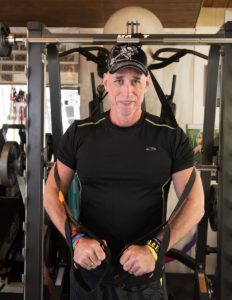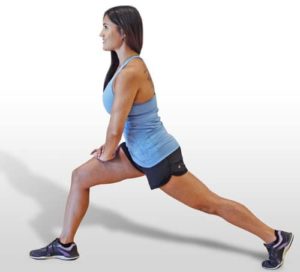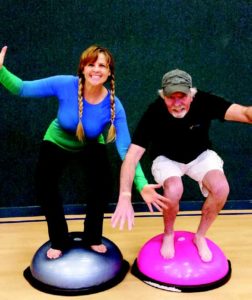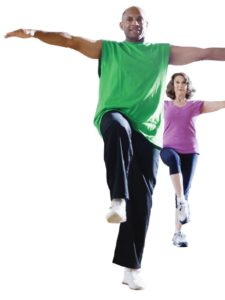Safety
Sexual Harassment and the Fitness Industry
One day, while stretching my client Jim, I was taken aback when I realized he wasn’t wearing underwear. His shorts were swim trunks with interior netting. I quickly looked away and continued to stretch him. This happened with Jim on several other occasions, but I never mentioned it because I wasn’t sure how to broach the matter. I also didn’t feel as if he was doing this intentionally, nor did I believe he meant harm.
The Case Against Allowing Injured Instructors to Teach
Owing to the part-time nature of most group fitness instruction jobs, program directors don’t always interact with staff on a daily basis and may not know that an instructor is teaching while injured.
Walking Speed: A Predictor of Functional Health
Slow walking speed has been linked to a greater risk of mortality in older adults, while brisk walking has been linked to better health.
Programming to Prevent ACL Injury
Your new client, 16-year-old Alexis, is a competitive athlete who wants you to design a fitness program that will help her prevent a second anterior cruciate ligament (ACL) tear. She partially tore her ACL while playing soccer and rehabbed it with a physical therapist, who cleared her to play again. Alexis returned to spring softball without an issue, but she would like to be as fully prepared as possible for the upcoming fall soccer season. She hopes to be recruited to play in college, but her parents are concerned she will sustain another ACL injury, perhaps a more severe one.
The Achilles Tendon
Many fitness professionals have dealt with an Achilles tendon injury, either their own or a client’s. The largest and strongest tendon in the body, the Achilles connects the lower-leg muscles and calf to the heel. “Synchronous functioning” of the tendon and calf is crucial for many activities, including standing on tiptoe, running, jumping and climbing stairs (Bhimji 2016).
Dutch surgeon Philip Verheyen named the tendon (after the Greek hero Achilles) in 1693. Previously, it was known as “tendo magnus of Hippocrates” (van Dijk 2011).
When the Client Is You
client: Frank | personal trainer: Frank McKenna, MEd, owner, Beach Better Bodies | location: Virginia Beach, Virginia
A dire situation. In the summer of 2016, personal trainer Frank McKenna received news he never expected to hear. At age 56, he had recently completed his own physical transformation and was arguably in tiptop shape, so when his doctor told him he had stage 4 lung cancer, he was stunned.
The Anatomy of Functional Training Risks
Many clients can’t seem to get enough of workouts that meld functional movements with high-intensity resistance training. Indeed, workouts using dynamic, high-intensity, full-body movements are great for strength and health—provided the body functions properly and exercisers use correct technique.
Row Your Way to Health
Did you know that rowing has been a competitive sport for hundreds of years (and an official Olympic event since the modern Games began)?
At lower intensity levels, rowing is a great training tool. As long as rowing form is correct and efficient, people of all ages, sizes and abilities will enjoy better cardiovascular and muscular function from rowing regularly. Rowing can strengthen your aerobic system, making it easier to take care of kids, work around the house, use the stairs at work and race from one meeting to the next without running out of breath.
Hit the Hips!
Eager class participants want to tap into their highest potential, and group fitness instructors have been acknowledging this by offering workouts that are more explosive, more powerful and fuller in range than ever before. However, intense, dynamic workouts demand a warmup that truly prepares the body. Specifically, you must target the hips—hip flexors, piriformis, glutes and hip rotators—to avoid possible tweaks from all those lunges, squats and burpees (not to mention repetitive stress from cycling and running).
U.S. Yoga Injuries Increasing
Yoga injuries in the United States are on the rise, particularly among older adults, according to data from hospital emergency rooms nationwide. Researchers from the Center for Injury Sciences at the University of Alabama in Birmingham (UAB), Alabama, examined data from 2001 to 2014 to establish the injury risk involved in yoga participation.
Kids’ Injury Risk Is Higher in Particular Sports
Studies have shown that sport specialization can raise injury risk in school-age athletes. New research suggests that some sports may be more dangerous than others for kids who specialize.
Exercise Plus Regular Movement Best for Reducing Health Risks
Over the past several years, researchers have reported on the negative impacts of extended periods of sitting on health and mortality. Some have looked at whether exercise can mitigate any of those effects. The debate continues in a recent study.
Thriving After a Stroke
client: Gary | personal trainer: Tracy Markley, owner, Tracy's Personal Training | location: Florence, Oregon
Surviving a stroke. In May 2014, 65–yearold Gary had a stroke so severe his doctors were skeptical he'd survive it. Fortunately they were wrong, but he suffered so much damage that physical therapists were initially convinced he'd be wheelchair–bound for life.
The 4 Most Common Running Injuries and How to Address Them
Use corrective exercise to help clients stay on track with their mileage goals.
Power Up to Prevent Injury
Participants rarely think about injuries until after they happen (hopefully not in your class!). But someone who needs rehabilitation may face a delay in meeting fitness goals. Another issue: Our group fitness studios are filling with people of many different ages and abilities.
“How do you handle the situation when a client comes in sick or with an obvious medical condition such as open sores?”
I ask the client to obtain a medical clearance from a doctor before we can train. I explain that this is precautionary for his or her own health. Why do I ask for medical clearance? When clients are ill, exercise is most likely not going to benefit them. When a client seeks medical clearance, the doctor usually reinforces my original concerns.
Bill Ross
Owner, Bill Ross Fit and
Holistic Life Forever
Denver
A Best Rest Interval for Bench Press?
Rest is often a carefully thought-out variable in strength training routines. Rightly so, suggests research published
in the Journal of Strength & Conditioning Research (2015; 29 [11], 3079–83). The study found that resting too little or too much can negatively impact ratings of perceived exertion and the number of repetitions exercisers complete.
Safety for Pregnant Instructors
Many years ago, while I was pregnant with my second child, something happened that I hope no other group fitness instructor goes through. As I was driving to teach class,…
“Do your clients perform stretches before a workout, or do they do a dynamic warm-up and then static stretching at the end?”
We do a dynamic warm-up to raise body temperature, which raises heart rate and increases circulation to muscles, tendons and ligaments. A dynamic warm-up also helps prepare the mind and body for the upcoming workout, enhances performance and reduces injuries.
I even use dynamic warm-ups when I teach yoga. Most Baby Boomers (and I am one of them) need dynamic warm-ups.
Can Barefoot Running Prevent Injury?
There’s plenty of discussion about whether barefoot running helps runners or harms them. A new report suggests that females may benefit from employing this controversial protocol.



















